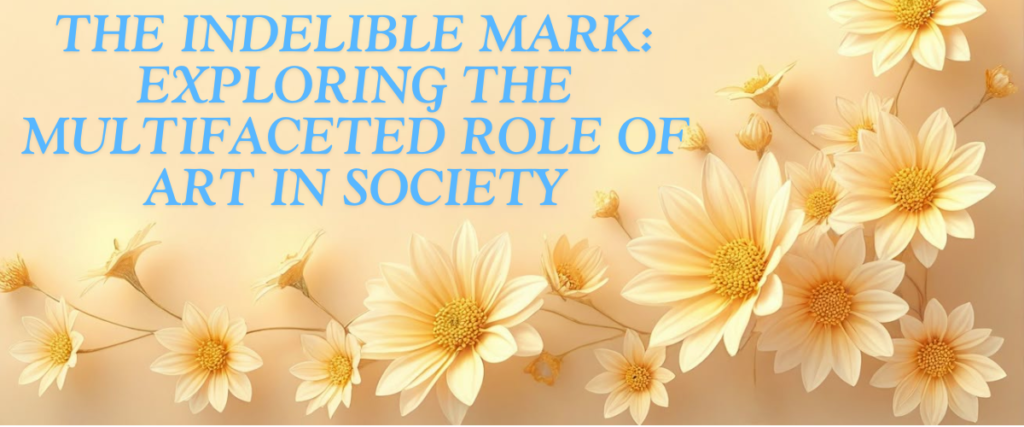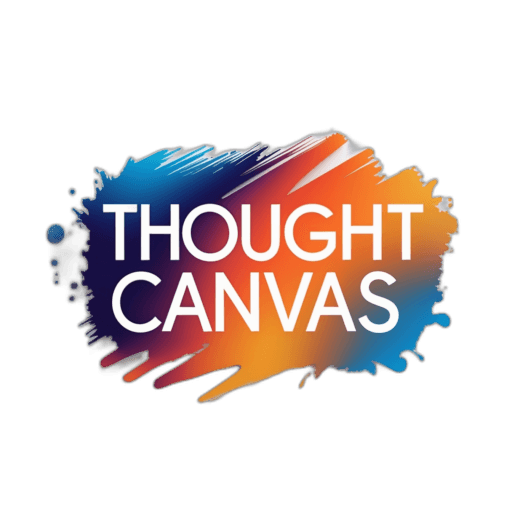Art, in its myriad forms, is more than mere aesthetic pleasure. It’s an essential part of our humanity, a social reflection of human beings, a spark of societal movement. From the cave paintings of Lascaux to the digital installations of contemporary artists, Art has unceasingly served as a significant force in shaping societies, influencing cultures, and facilitating the growth of the individual and the collective. In this blog post, we will go through the intricate and multidimensional and complex roles that Art serves in the world, how it arouses attention and gives insight, provoking remarkable and radical change and change-makers, healing, care and connection – both with the self and the society.
1. Communication and Expression: Beyond Words
At its core, Art is a powerful form of communication. It transcends the limitations of language, allowing us to express complex emotions, ideas, and experiences that might be difficult or impossible to articulate verbally. Visual Art, music, dance, theatre, and literature all serve as conduits for conveying meaning, fostering understanding, and connecting individuals across cultural and linguistic barriers.
- Visual Arts: Paintings, sculptures, and photography can encapsulate the essence of a moment, evoke powerful and deep feelings, and tell stories that resonate with viewers on a visceral level. A single image can communicate a thousand words, offering insights into historical events, social issues, or personal experiences.
- Music: From joy and excitement to sadness and contemplation, music has the power to evoke emotion unlike any other medium. It can unite people in shared experiences, foster a sense of community, and serve as a powerful tool for social commentary.
- Dance and Theatre: These performative arts use movement, gesture, and storytelling to convey narratives, explore human relationships, and challenge societal norms. They cater a canvas for delving into nuanced topics and captivating crowds in a lively and immersive way.
- Literature: Through poetry, novels, and plays, writers use their pen to probe the depths of the human condition, examine what identity means and show us a reflection of the world around us. Literature can transport us to different times and places, allowing us to experience the world through the eyes of others and fostering empathy and understanding.
2. Education and Cultural Preservation: A Legacy for Future Generations
Art plays a crucial role in education and cultural preservation. It serves as a tangible record of our history, traditions, and values, ensuring they are passed down to future generations.
- Historical Documentation: Art serves as a historical archive, providing an overview to understand the lives, beliefs, and practices of past societies. From ancient Egyptian hieroglyphs to Renaissance paintings, Art offers a window into the past, allowing us to learn about different cultures and historical periods.
- Cultural Transmission: Art plays a vital role in preserving cultural traditions and values. Folk art, traditional music, and indigenous crafts are all examples of how Art can transmit their heritage and cultural knowledge from one generation to the next.
- Educational Tool: Art can be a learning aid to help the students understand various concepts. Visual arts can help students develop critical thinking and problem-solving skills, while music and drama foster creativity and self-expression. Art history can teach students about other cultures and historical periods and thus expand their worldview.
3. Social Commentary and Activism: Sparking Change
Art has long been used as a tool for social commentary and activism, challenging societal norms, inspiring social change, and raising awareness of important issues.
- Challenging the Status Quo: Artists often use their work to challenge prevailing social norms, question authority, and advocate for marginalised groups. Art can be a powerful voice for the voiceless, giving a platform to those who are often overlooked or ignored.
- Raising Awareness: Art can raise awareness of important social and political issues, such as poverty, inequality, environmental degradation, and human rights abuses. Art can inspire action and encourage people to make a difference by presenting these issues compelling and thought-provokingly.
- Promoting Social Change: Art can catalyse social change, inspiring people to challenge injustice and work towards a more equitable and just society. From protest songs to street art, Art has been used to mobilise movements and bring about meaningful change.
4. Healing and Therapy: The Power of Creative Expression
Sculpture, painting, and music therapy are just some of the powerful practices that use Art to heal the individual, cope with trauma, express feelings, or improve mental and physical health.
- Art Therapy: Art therapy uses creative expression to help individuals explore their emotions, improve their self-esteem, and develop coping skills. It can be particularly beneficial for people who have experienced abuse, trauma, or other forms of emotional distress.
- Music Therapy: Music therapy utilises music to address cognitive, physical, emotional, and social needs. It can be used to augment pain reduction, mood enhancement, and cognitive performance.
- Creative Expression: Partaking in creative activities, such as writing, painting, drawing, or playing music, can be an effective and powerful way to reduce stress, improve mood, and enhance overall well-being.
5. Fostering Community and Connection: Shared Experiences
Art creates a sense of community and brings people closer. Shared artistic experiences, whether attending a concert, partaking in an art project in a community, or visiting a museum, can connect people and reinforce and strengthen social bonds.
- Public Art: Public art installations can transform urban spaces, creating vibrant and engaging environments that foster a sense of community.
- Community Art Projects: Community art projects bring people together to create Art, fostering collaboration, creativity, and a sense of shared ownership.
- Cultural Events: Cultural events, such as exhibitions, festivals, and concerts, allow people to unite and celebrate their shared cultural heritage.
6. Innovation and Economic Growth: The Creative Industries
The arts play a significant role in innovation and economic growth, driving the creative industries and contributing to the overall economy.
- Creative Industries: The creative industries, which include film, music, publishing, design, and advertising, are a significant source of economic growth and employment.
- Innovation: Art can inspire innovation in other fields, such as science, technology, and engineering. Artists often think outside the box, challenging conventional thinking and developing new and creative solutions to problems.
- Tourism: Economic drives of Art and culture are major drivers of tourism, attracting tourists from near and far of the country and generating revenue for the local economies.
7. Personal Growth and Self-Discovery: Exploring the Inner Self
Partaking in Art can be transformative, fostering personal growth and self-discovery. Art can help us explore our inner selves, gain insights into our feelings and thoughts, and better understand ourselves and the world around us.
- Reflection and Introspection: Art can provide a space for reflection and introspection, allowing us to contemplate our own experiences, beliefs, and values.
- Emotional Release: Creative activities can serve as a healthy outlet for releasing pent-up emotions and expressing feelings that may be difficult to describe in words.
- Self-Expression: Art provides a platform for self-expression, allowing us to express our distinct viewpoints and experiences to the world.
Conclusion
Art is considered an essential component of human experience, providing society with a wide variety of functions. It is one of the most effective mediums for all communication, whether education, social commentary, healing, community building, etc. But from the very first cave paintings to the most recent digital installations, Art has always mirrored and influenced our world, enhancing our lives and encouraging us to build a better tomorrow. Whether through policy or simply making a more considerable effort to hear from new voices, a world without the arts and its changing tides is not to be accepted, and the more we help facilitate their place in the new era, the more they can work to transform individuals and communities for years to come. Art is not a luxury but an essential, life-filling energy that fills our lives and the world with more substance and beauty.
Disclaimer
The blog post contains only general information for informational purposes and does not comprise professional advice. Please confer with a qualified professional for any specific advice or guidance. The author is not liable for any omissions or errors in the content or results obtained from using this information.


